The 4 Pillars of Vitality, Interview, Sage Petersen, PCC Instructor
By Adrienne Harvey, SrPCC, RKC-TL, CK-FMS
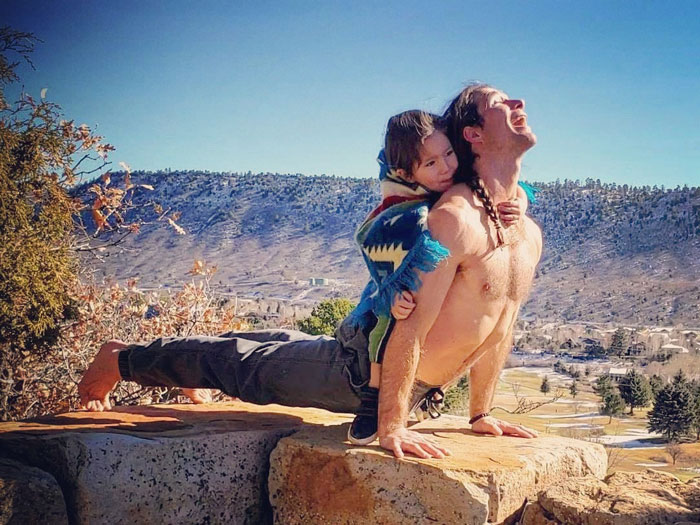
Dragon Door: I read that your job title is "vitality coach." How would you describe that role?
Sage Petersen: I call myself a vitality coach, which includes movement as well as lifestyle. My main pillars for vitality are movement, nature connection, meditation, and martial arts. I teach these topics separately in
personal training and classes, but I also do coaching which incorporates all the pillars.
Dragon Door: How did you get started on this career path?
Sage Petersen: When I was very young, my dad (who was a single dad like I am) took us to his clients' houses and the gym while he was personal training. So I've been around movement and personal training since I was about three years old! At four, I started doing martial arts and sports.
My passion is feeling good, being connected to nature, and my own vitality. Naturally, I want to increase that connection for myself. I also want to support others while they find their own connection to
health, well-being, and the earth. I see human beings as stewards of the earth, and I believe that that responsibility begins with our own health and well-being.
Dragon Door: Which martial arts are you studying and teaching?
Sage Petersen: It's kind of a blend. I've studied taekwondo, some jujitsu, grappling, wrestling, Arnis (Filipino stick fighting), Kuntao (an Indonesian martial art with Chinese roots), and
tai chi—a beautiful movement for vitality that also has the potential to be a very effective martial art.
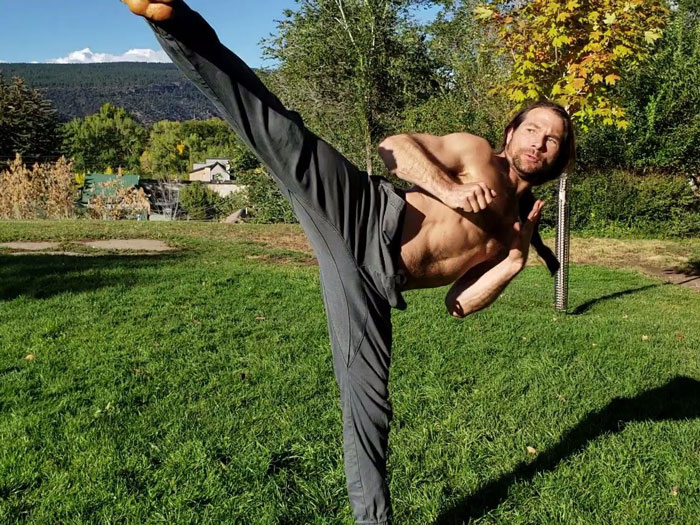
Dragon Door: What brought you to the PCC?
Sage Petersen: One reason was seeing how
Al and Danny show up in the world, and their humor. I wanted to hang out with these guys! So, they were a big factor. Also, I am a real believer in bodyweight natural movement. I feel like the benefits of bodyweight exercise go beyond just having a strong and able body—it really primes the nervous system. There's a lot of magical stuff that happens when we're working with the body in what I call a "primal" kind of way. It’s like a hunter-gatherer kind of thing which I feel is kindred to the
PCC.
Dragon Door: How are you planning to use what you learned at the PCC with your current clients?
Sage Petersen: I do individual personal training, classes, and seminars. I want to add a lot of the body awareness techniques from the PCC about tension, breath, and little subtleties. I learned these little jewels of body awareness and effective strength training so that I can be the example. This has helped me achieve a full-on
human flag and other advanced moves—so, seeing how the training has supported me and then sharing that with my clients. Many of my workouts are at the playground, and the PCC gave me a bunch of tools that I feel can really support our workouts there.
Dragon Door: Of all the movements, which are your favorite in terms of overall effectiveness?
Sage Petersen: I would say the handstand. I believe the handstand brings out very many dynamic strength skills as well as subtle foundational skills.
For example, if you have a really great handstand, then you have great posture. The handstand teaches great posture. If you’re able to do a really great handstand, then it’s also much less of a strength move. You will have already learned the subtleties and body awareness to align your body in a way to support the handstand and daily movement. You do need a lot of strength, skill, and mobility to even perform a handstand, but there are many great progressions toward the handstand, which can also make a very strong person.
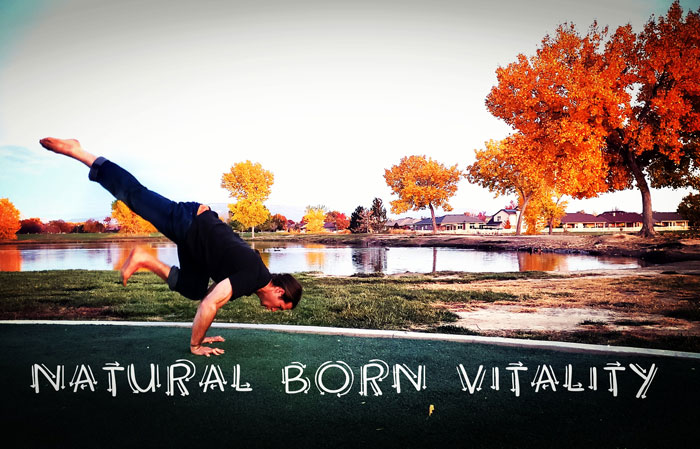
Dragon Door: Which moves do you find personally challenging?
Sage Petersen: For me right now it’s the one arm elbow lever on the ground. I find that I'm pretty good at hand balancing and strength moves. But finding the balance and using the right amount of tension—all while getting my hand in the right spot—has been challenging for me. I love this because it brings more awareness to my blind spots.
Dragon Door: When instructing others, do you have a favorite move or set of moves?
Sage Petersen: It might not be too impressive, but a full heels-down squat is a basic movement that will increase anyone’s vitality, joint health, and everything else. If someone can practice basic squats, then they will be at another level of health. Many people—especially Americans—can’t do it! While I like movements that increase basic vitality, you can do so much with the squat—and it can move into very challenging exercises like the
pistol squat and beyond. So, I would choose the squat because of its basic gifts, and its potential for progressing to many more challenges.
I’d also choose the muscle-up because it creates freedom of movement. If you can do a muscle-up, then you can run up to a big wall, jump up, hop right over it, and keep going. That’s freedom.
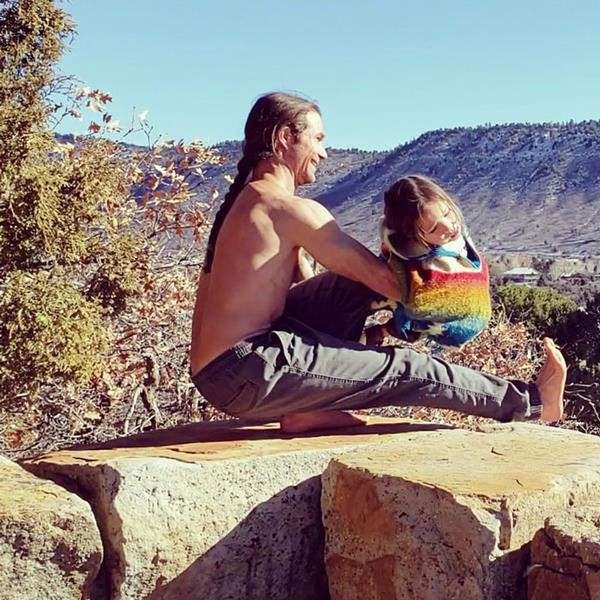
Dragon Door: Now that you’ve earned your PCC, and are involved with helping to
bring a PCC to Colorado, what are you working on in your own training and with your training business?
Sage Petersen: I’m always working on myself, because I want to be an example. And I've got a long way to go before I am where I want to be—I want to inspire other people. At 35, I'm not super young anymore, so being able to inspire people to keep moving—and maintain their movement strength and freedom—is a big motivator. I’d like to continue supporting the PCC and become a Team Leader.
I’m also working on online courses to teach and support people with a natural movement routine that will help heal their bodies while creating more strength and function.
Dragon Door: What else has informed this path you've chosen for your life?
Sage Petersen: My experience as a competitive martial artist has inspired me to think more deeply. As a kid, I went to Nationals in taekwondo sparring and trained with very high-level people. I learned that there is so much more beyond just our natural gifts, our movement, and our physical condition. Sometimes I would go into a tournament and just not do as well as I wanted to.
Recently, the nervous system (the master computer of the whole body and emotions) is really intriguing to me. It’s such an old system in our being, yet it really controls everything: how well we perform, how socially engaged we are, how emotionally balanced and present we are. It even controls how much pain we experience. What I am realizing now through my studies is that the nervous system works on a bidirectional basis with the body. This means that the way that we move our bodies can trigger or communicate to the nervous system whether or not we feel safe. There’s a lot more to it, but in essence if we are able to move, train, exercise, and show up in the world in a way that communicates to our nervous system that we’re safe, then our whole life will be better. Our nervous system will allow us to have more emotional balance, free social engagement, and more confidence to tackle whatever physical challenges we may encounter in our lives.
Likewise, working with the nervous system supports moving more naturally, smoothly, with great strength and no pain. To me, this magical kind of science is the key to feeling and looking better as well as functioning at our highest level while connecting to a deeper purpose.
Dragon Door: How are you implementing these ideas in your instruction and programs?
Sage Petersen: I like to bring people out into nature, and lead our workouts in nature. We also work on awareness—we’re paying attention to the sounds of birds and observing what’s going on around us. We use our eyes—and moving our eyes is one way to trigger the nervous system into a mode of safety and health. So I bring nature into the workouts, we crawl in the woods and do hunter-gatherer activities. This builds a lot of strength and an awesome connection to nature as well.
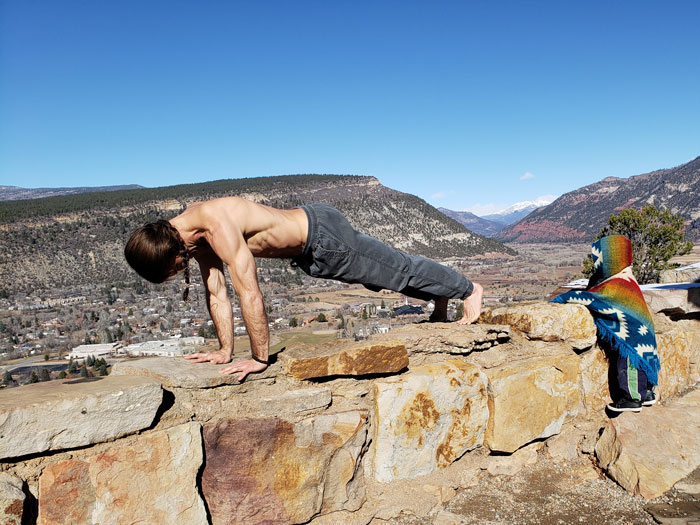
I also am organizing ancestral skills gatherings which will incorporate making fire with friction, martial arts, and other primitive life skills connected to movement and strength.
Dragon Door: How would you define "ancestral skills"?
Sage Petersen: It’s everything that our ancestors—everyone’s ancestors—had to master in order that we are still here on earth. It’s survival of the fittest. Who was the best hunter and tracker? Who could make the best baskets which would not leak? Who could tan hides and make warm clothes? It’s also learning the awareness of what nature is communicating to us. It’s also the ability to make fire, create useful items, and to be able to move in a smooth, powerful fashion.
Dragon Door: That sounds very compatible with fitness and physical readiness topics for sure. Along with crawling in nature, what else would be in a typical group session that's exercise-focused?
Sage Petersen: The session would depend on participants’ fitness levels of course, but I usually start with the basics. I have various foundational movement skills that I share along with more challenging movements. Everything is focused on body awareness.
Squats, push-ups, planks, bridges, and various rolls are very important to my program. I like to incorporate strength, flexibility, mobility, and balance into what I call "dynamic movement"—which integrates cross-cutting physical challenges such as martial arts, rolling, and climbing, along with lizard crawls and other advanced crawling movements.
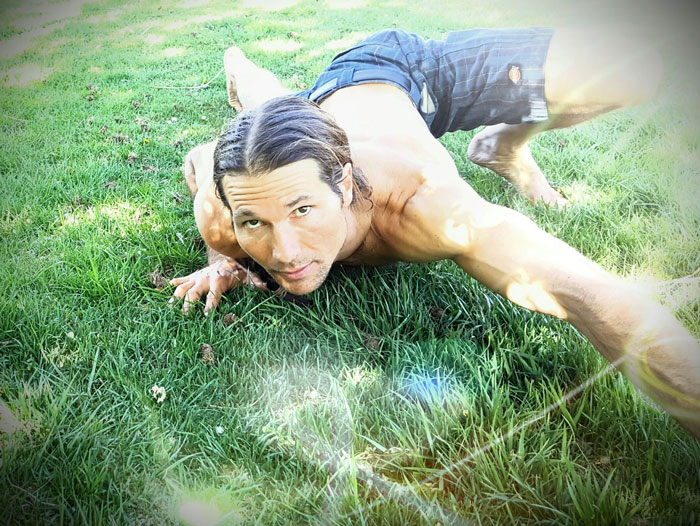
If people can create a strong foundation, it will give them the ability to perform more complicated, sophisticated movements without getting hurt. Those with a higher fitness level in my group might be doing really great pullups and primal movement flows, a combination of tai chi and crawls, which is similar to a kata. All of it is playing really, which is a key thing for me—play. We need to be able to play.
Dragon Door: Who do you typically train? Is there a particular demographic that’s drawn to your style of training?
Sage Petersen: I have a lot of 45-and-over people who were athletes but now their bodies hurt. I feel like the movements I focus on help them heal. In fact, I had a really terrible chronic back injury. At one point I was thinking I might not walk correctly again and was considering surgery. Then I started practicing this natural movement, and now I'm stronger and more mobile than I’ve ever been. I can run faster, and my body and back don’t hurt. This is something I feel like I can really offer to people who also have pain.
My other main demographic is 20 to 40-year-old athletes who want to be playful in their bodies and do whatever they want. They are not specializing; instead, they want to develop very multi-faceted skills. In an increasingly complex world, we have to prepare our minds and bodies to confront a wide range of physical and mental challenges. To do that effectively, we need to develop a skill set that allows us to accept discomfort and flow at a high level. That’s
resilience—and it’s foundational to survival of the fittest. In many ways, we’ve gotten so comfortable that we’ve lost that resilience in today’s society. In my training, I help people rediscover it by reconnecting with nature and their natural born vitality.
Back